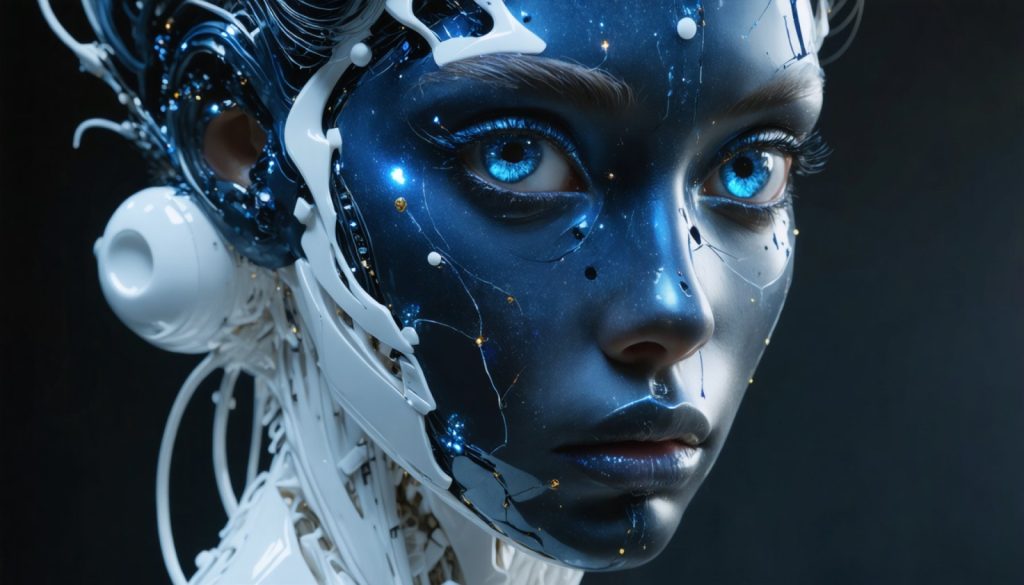
- AI is revolutionizing fashion by integrating creativity with technology, helping designers conceptualize, create, and showcase innovative designs.
- Leading fashion houses and emerging designers use AI to streamline processes and analyze trends, predicting and generating future styles.
- AI-generated digital prints captivate audiences with vibrant patterns, enhancing designers’ abilities to personalize creations based on individuals’ tastes.
- AI impacts fashion retail with virtual fitting rooms, enhancing the shopping experience and providing insights into consumer preferences.
- The partnership between AI and designers fosters sustainability by allowing brands to gauge interest before mass production.
- AI augments human creativity, suggesting that while machines may learn and evolve, they support rather than replace the creative process.
- The fusion of AI and fashion challenges traditional boundaries, inviting designers to innovate and explore new creative possibilities.
Fusing technology with creativity unveils a dazzling new frontier in fashion. Imagine garments designed in collaboration with artificial intelligence that both pay homage to classic styles and pioneer bold, futuristic visions. This isn’t mere speculation—AI is swiftly transforming how designers conceptualize, create, and showcase fashion.
Today’s top fashion houses and emerging designers alike are harnessing AI to soar beyond traditionally labor-intensive processes. These cutting-edge technologies analyze vast datasets of fashion trends, fabrics, colors, and even consumer preferences, crafting designs that often leave observers speechless. Analyzing past styles lets AI predict and generate future trends with surprising accuracy. Whether sketching haute couture dresses or crafting accessories, AI excels at transforming abstract ideas into tangible designs.
Look no further than the mesmerizing digital prints that have captivated runways across the globe. AI-generated patterns spin vivid tapestries of color and form, reminiscent of a Monet painting or a kaleidoscope. The technology enhances the designer’s toolkit, allowing them to conjure unique and personalized pieces that resonate deeply with the wearer’s desires. AI assists in creating fashions tailored to individual tastes by using advanced algorithms and machine learning techniques.
Beyond creating innovative designs, AI is revolutionizing fashion retail. Virtual fitting rooms, powered by sophisticated algorithms, allow shoppers to try on clothes without setting foot in a store. This technology not only enriches the customer experience but also offers valuable insights to brands about consumer preferences. Such advances promote sustainability, as brands can optimize production by gauging consumer interest before producing garments en masse.
The fusion of AI with fashion goes beyond pragmatism; it invites philosophical reflection. Can machines truly encapsulate the human touch, the emotion, and the storytelling inherent in fashion? Perhaps, but they undeniably augment creativity. Designers collaborating with AI can explore novel perspectives, pushing the boundaries of what fashion can become.
AI’s real magic lies in its ability to learn and evolve. As it assimilates more fashion knowledge, it can spark revolutionary ideas, sparking new creative directions. While some may fear the encroachment of machines into realms traditionally dominated by human intuition, the synergy between AI and human creativity heralds a new era of fashion innovation.
Takeaway: The marriage of AI and fashion is not merely a trend but a powerful shift redefining creativity and consumer experiences. Embracing this technological partnership allows designers to explore uncharted territories, blend practicality with audacity, and ultimately craft the future of fashion bit by silicon bit.
The Future of Fashion: How AI is Revolutionizing Design and Retail
Unleashing New Possibilities with AI in Fashion
The integration of artificial intelligence (AI) into the fashion industry has opened up exciting new horizons that weave together technology and creativity. Designers are leveraging AI not only to reimagine traditional styles but also to pioneer new, avant-garde designs that challenge conventional norms. This transformative trend is reshaping both the creative and business aspects of fashion, making it essential to explore the full extent of AI’s impact and potential.
How AI Enhances Fashion Design
1. Trend Prediction and Analysis: AI algorithms analyze vast datasets, spotting patterns in fashion trends, color palettes, and consumer preferences with remarkable precision. This analysis allows designers to stay ahead of trends, creating collections that align with upcoming consumer desires. According to a report by McKinsey, AI can increase forecasting accuracy by up to 85% in the fashion industry.
2. Design Automation: AI tools facilitate the design process by rapidly generating multiple iterations of a concept. Designers can converge traditional and futuristic aesthetics by using AI to explore novel fabric combinations, patterns, and silhouettes. This enhances creativity and reduces time spent on labor-intensive design tasks.
3. Personalization and Customization: Advanced machine learning tools make it possible to tailor garments to individual body types and style preferences. AI can analyze a customer’s past purchases and style searches, offering design suggestions and personalized fittings.
AI-Driven Retail Innovations
1. Virtual Fitting Rooms: Virtual reality (VR) and augmented reality (AR) powered fitting rooms allow customers to try on clothes digitally. This provides a more engaging shopping experience and reduces the need for physical inventory, supporting sustainable practices by minimizing returns and excess production.
2. Supply Chain Optimization: AI optimizes supply chain management by forecasting demand and managing inventory efficiently. This minimizes waste, and lowers costs, and enhances sustainability efforts within the fashion industry.
3. Enhanced Customer Insights: AI provides brands with deeper insights into consumer behavior through data analysis, allowing for more targeted marketing strategies and improved customer satisfaction.
Addressing Common Questions
– Can AI replace fashion designers? While AI can augment and expedite the design process, it won’t replace the human intuition and emotion integral to creating meaningful fashion. Instead, AI acts as a powerful tool that allows designers to experiment and explore new ideas.
– What are the environmental impacts of AI in fashion? AI contributes to more sustainable fashion by optimizing production and reducing waste. It helps in predicting consumer demand, thereby aligning production quantities with actual sales, which minimizes overproduction.
– Is AI-generated fashion being embraced by consumers? Yes, AI-designed clothing is gaining popularity for its uniqueness and personalization. However, it is crucial for brands to balance technological innovation with the human touch that consumers value.
Real-World Use Cases
– Burberry: The luxury fashion house uses AI to analyze runway video feedback and predict trends.
– Stitch Fix: This fashion subscription service harnesses AI to offer personalized outfit recommendations based on customer profiles and feedback.
Challenges and Limitations
– Data Privacy: The use of consumer data by AI systems raises privacy concerns that brands must address by ensuring transparency and adherence to data protection laws.
– Technology Costs: Implementing advanced AI systems can be costly, posing a barrier for smaller fashion brands.
Actionable Tips
– Brands: Embrace AI tools selectively, focusing on areas where they can provide the most value, such as trend forecasting and inventory management.
– Consumers: Explore digital fitting rooms and personalized recommendations to enhance your shopping experience.
As AI continues to evolve, the synergy between artificial intelligence and human creativity will craft stunning, sustainable, and innovative fashion landscapes. This dynamic partnership offers a glimpse into a future where style meets technology in harmoniously groundbreaking ways.
For more insights on the role of AI in today’s tech landscape, visit IBM.



